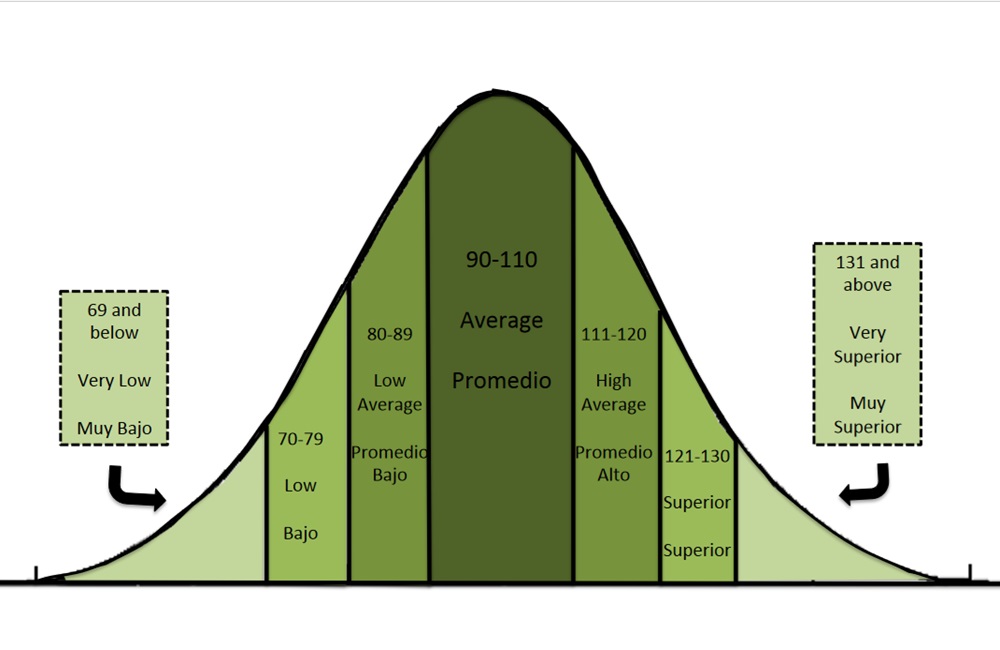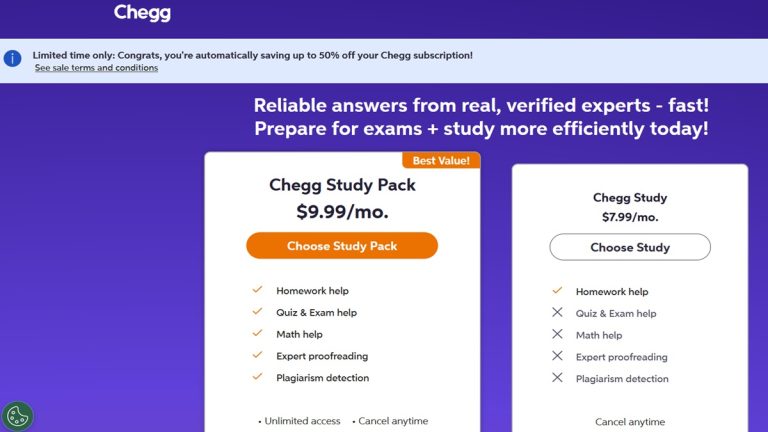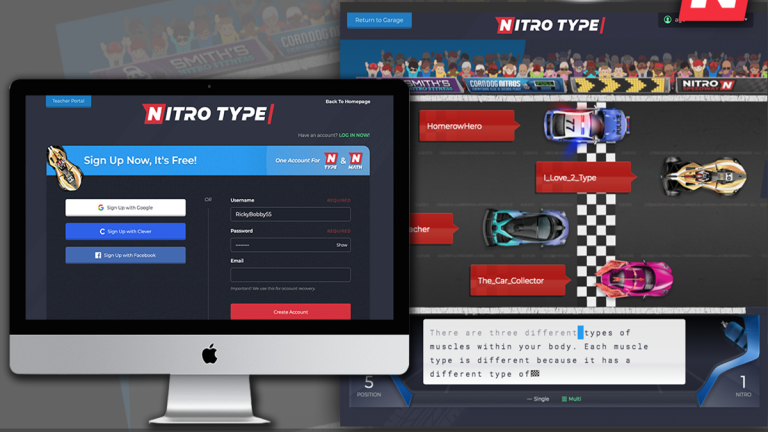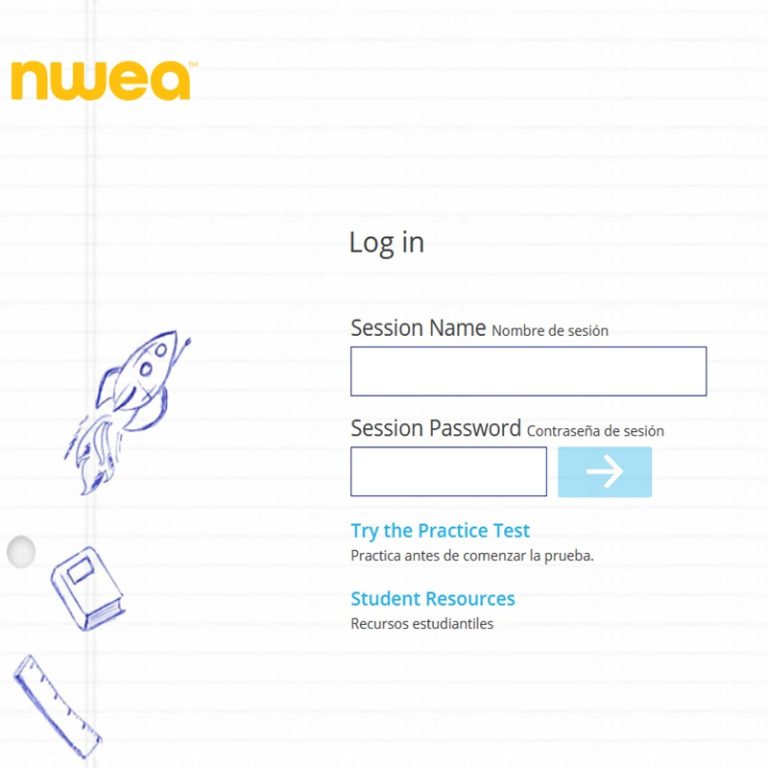The Woodcock Johnson Test Scoring for Cognitive Abilities – WJ IV Test FAQ
The Woodcock Johnson Test of Cognitive Abilities and Achievement.
The Woodcock-Johnson Tests of Cognitive Abilities (WJ), specifically the most recent version, Woodcock-Johnson IV (WJ IV), is one of the most trusted and widely used assessments in educational psychology. Its primary function is to assess cognitive strengths and weaknesses, as well as academic achievement across different skill areas. This article provides an in-depth explanation of the WJ IV test, how it is administered, how scores are interpreted, and alternative options.
What is the Woodcock Johnson Test?
The Woodcock-Johnson IV (WJ IV) is a comprehensive battery of standardized tests designed to assess cognitive abilities, academic achievement, and various linguistic and processing skills. It is divided into two main sections:
- Woodcock-Johnson IV Tests of Cognitive Abilities (WJ IV Cognitive): This section measures a wide range of cognitive skills, including general intelligence (g), processing speed, short-term working memory, visual-spatial thinking, long-term retrieval, and auditory processing. The aim is to get a clear picture of an individual’s mental faculties and how well they can apply these faculties in problem-solving and reasoning situations.
- Woodcock-Johnson IV Tests of Achievement (WJ IV Achievement): This component measures academic skills and how individuals apply their cognitive abilities in academic tasks. It assesses reading (including comprehension and fluency), writing, mathematics, and academic knowledge in various subjects. It is frequently used in schools to identify learning disabilities, assess educational interventions, and evaluate student progress.
The WJ IV is frequently used by school psychologists, educational consultants, and specialists to gain a deep understanding of students’ academic performance and cognitive development. This test is also applied in cases where professionals are looking to assess developmental disabilities, determine eligibility for gifted education programs, or diagnose specific learning disabilities like dyslexia and dyscalculia.
Who Can Take the Woodcock Johnson Test?
The Woodcock-Johnson IV is designed to be highly versatile and can be administered to individuals across a broad age range:
- Children as young as 2 years old can take parts of the test, although the specific subtests administered vary based on age.
- School-age children (K-12) frequently take the WJ IV for educational assessments, diagnostic testing, and identification of learning strengths and weaknesses.
- College students and adults can also take the WJ IV for academic or employment evaluations, including individuals seeking accommodations for learning disabilities in higher education.
- The test is applicable for adults well into their senior years, making it a useful tool for cognitive assessments across the lifespan.
The test can be administered to individuals from diverse backgrounds, as it offers various accommodations for those with disabilities, language barriers, or other unique needs.
Woodcock Johnson Test Scoring: What Do the Scores Mean?
The Woodcock-Johnson IV uses a standardized scoring system based on the individual’s raw scores, which are then compared to a normative sample. The two primary score categories are standard scores and percentile ranks.
1. Standard Scores
Standard scores are calculated using a mean of 100 and a standard deviation of 15. The standard score reflects how a person’s performance compares to the average performance of people in the same age group. A score of 100 is considered average.
- Low Scores: Scores below 85 are typically considered below average. For example, a score of 70 might indicate significant challenges or difficulties in that particular area of testing.
- Average Scores: Scores between 90 and 110 are generally within the average range.
- High Scores: Scores above 115 are considered above average, indicating high achievement or advanced cognitive abilities. For example, a score of 130 or higher might suggest superior performance in specific areas, such as mathematics or reading comprehension.
2. Percentile Ranks
Percentile ranks show where an individual’s score falls relative to others in the norming sample. For example, a score in the 50th percentile means the individual scored better than 50% of others in the same age group.
- 1st-24th Percentile: Below average
- 25th-74th Percentile: Average range
- 75th-99th Percentile: Above average
3. Subtests and Clusters
The WJ IV also features subtests and cluster scores. Each subtest measures a specific skill area (e.g., fluid reasoning, working memory, comprehension). Cluster scores group related subtests to provide a more comprehensive evaluation of specific abilities. For instance, the Reading Cluster may combine reading fluency and comprehension scores for an overall reading ability score.
High and low scores can inform decisions about whether a student may need additional support (for lower scores) or whether they should be considered for advanced programs (for higher scores).
Woodcock-Johnson Scoring – In Detail.
The Woodcock-Johnson Test of Cognitive Abilities is scored using three key types of statistics: Level of Development, Comparison with Peers, and Degree of Proficiency. These measures provide a comprehensive understanding of a child’s cognitive and academic abilities. Here’s an overview of each type:
1. Level of Development
- Age Equivalent (AE): This score reflects how a child’s performance compares to the average score for children of a particular age. For example, if a child scores an AE of 12.1 on a test, it means their performance is comparable to that of an average 12-year-old, regardless of their actual age.
- Grade Equivalent (GE): Similar to AE, but in terms of grade level. A child scoring a GE of 6.5 in reading fluency means they perform at the level of a mid-sixth grader, even if they are in a higher grade.
2. WJ Woodcock Johnson Scores – Comparison with Peers.
The standard score (SS) on the WJ-IV describes a child’s performance relative to the average performance of the comparison group.
- Standard Score (SS): This compares a child’s score with the average performance of their peers, based on a scale similar to IQ tests. The mean score is 100, and a score of 85 indicates low-average performance.
- Percentile Rank (PR): This score shows how a child performed relative to their peers. For example, a percentile rank of 85 means the child performed better than 85% of their peers.
- Score Interpretation: The scoring system combines standard scores, percentile ranks, and classifications. For example, a score of 85 (low average) corresponds to a percentile rank of 16.
WJ Woodcock Johnson Scores – Chart – Comparison with Peers:
This is how the Woodcock Johnson scores mean, relative to peers. A percentile rank (PR) for the WJ Test describes a child’s relative standing compared to his or her peers on a scale of form 1 – 100. So, a percentile rank of 8 would mean that only 8 children out of a 100 in a comparison group with the same age and education level, would score as low or lower.
Here is a table of the Comparison with Peers Scores:
| Score Range | Percentile Rank | Range Classification |
|---|---|---|
| 131 and above | 98 to 99.9 | Very Superior |
| 121 to 130 | 92 to 97 | Superior |
| 111 to 120 | 76 to 91 | High Average |
| 90 to 110 | 25 to 75 | Average |
| 80 to 89 | 9 to 24 | Low Average |
| 70 to 79 | 3 to 8 | Low |
| 69 and below | 0.1 to 2 | Very Low |
This table provides a clear representation of score ranges, their corresponding percentile ranks, and the classification for each range.
These scores help educators and psychologists develop tailored educational plans based on the child’s strengths and areas needing improvement.

3. Degree of Proficiency – The Relative Proficiency Index (RPI) Scores in the Woodcock-Johnson Test.
- Relative Proficiency Index (RPI): This measures how proficient a child is in a task compared to typical peers who perform the same task with 90% proficiency. An RPI of 55/90 means that while peers perform a task with 90% proficiency, the child performs it with 55% proficiency.
- RPI Interpretation: Scores are interpreted on a scale from “Very Advanced” (100/90) to “Severely Impaired” (0/90), indicating how easy or difficult a task is for the child.
The Relative Proficiency Index (RPI) Scores in the Woodcock-Johnson Test.
The Relative Proficiency Index (RPI) in the Woodcock-Johnson test is a key statistic that predicts how well a child will perform on tasks compared to peers who typically perform with 90% proficiency. The RPI is expressed as a ratio where the numerator is the child’s proficiency, and the denominator is always 90, representing typical peer performance. For example, an RPI of 55/90 means the child would complete tasks with 55% proficiency, while peers would complete them with 90% proficiency. The RPI provides insights into how challenging or manageable academic tasks are for the child.
Here is a table summarizing the interpretation of RPI scores:
| Reported RPIs | Functionality | Implications for Academic Achievement |
|---|---|---|
| 100/90 | Very Advanced | Extremely Easy |
| 98/90 to 100/90 | Advanced | Very Easy |
| 95/90 | Within Normal Limits to Advanced | Easy |
| 82/90 to 95/90 | Within Normal Limits | Manageable |
| 67/90 to 82/90 | Mildly Impaired to Within Normal Limits | Difficult |
| 24/90 to 67/90 | Mildly Impaired | Very Difficult |
| 3/90 to 24/90 | Moderately Impaired | Extremely Difficult |
| 0/90 to 3/90 | Severely Impaired | Impossible |
This table provides a clear understanding of the RPI scores and their implications for academic success, helping educators identify areas of strength or difficulty for the student.
How Long Does the Woodcock Johnson Test Take?
The length of time it takes to administer the Woodcock-Johnson IV depends on the number of subtests administered and the individual’s pace. On average:
- Full battery (cognitive and achievement) takes between 1.5 to 3 hours.
- Cognitive abilities section alone can be completed in around 60 to 90 minutes.
- Achievement section can also take 60 to 90 minutes, depending on how many subtests are used.
Individual subtests are relatively short, often taking 5 to 15 minutes each. For younger children or individuals with attention difficulties, the test can be broken into multiple sessions.
Where Can I Take the Woodcock Johnson Test Online?
While the Woodcock-Johnson IV is typically administered in person by a qualified psychologist, there are some online options for remote administration due to the growing use of digital assessments in education.
- Psychology clinics and educational testing centers may offer remote proctoring options.
- Online educational consultants or school psychologists can sometimes administer the test via video conferencing platforms.
- It is essential to confirm that the online testing provider is authorized to administer the WJ IV and follows the same rigorous standards as in-person testing.
One option is to search for local psychology practices or neuropsychological evaluation centers that offer both in-person and remote assessments. Keep in mind that taking the test online requires a stable internet connection, and you may need to use specific software to complete the subtests.
What are the Best Alternatives to the Woodcock Johnson IV Test?
While the Woodcock-Johnson IV is highly regarded, there are several alternative cognitive and achievement tests that can provide similar insights. Some of the most notable alternatives include:
1. Wechsler Intelligence Scale for Children (WISC-V)
The WISC-V is another widely used intelligence test for children aged 6 to 16. Like the WJ IV, it measures general intellectual ability and specific cognitive functions. The Wechsler Adult Intelligence Scale (WAIS-IV) is available for adults.
2. Kaufman Assessment Battery for Children (KABC)
The KABC-II is another cognitive test designed for children. It emphasizes fluid and crystallized intelligence and is frequently used to assess children’s intellectual development and learning disabilities.
3. Stanford-Binet Intelligence Scales (SB5)
The Stanford-Binet is one of the oldest cognitive assessment tools and remains a popular alternative to the WJ IV. It measures cognitive abilities across a broad range of ages, from early childhood to adulthood.
4. Peabody Individual Achievement Test (PIAT)
The PIAT is used to measure academic achievement in areas such as reading recognition, reading comprehension, and mathematics. It is an alternative to the WJ IV for assessing academic skills without as much focus on cognitive abilities.
5. DAS-II (Differential Ability Scales)
The DAS is used to measure the cognitive abilities of children aged 2 to 17 years. It is designed to assess both verbal and nonverbal abilities and can be particularly useful in identifying cognitive strengths and weaknesses.
FAQ: The Woodcock Johnson IV Test.
Frequently asked questions about the Woodcock-Johnson IV test (also known as WJ IV).
What does the Woodcock Johnson IV measure?
The Woodcock Johnson IV (WJ IV) is a comprehensive assessment that measures cognitive abilities, academic achievement, and oral language skills. It is designed to evaluate different aspects of intellectual functioning, from basic reading and math skills to higher-level cognitive functions such as problem-solving and reasoning. The test is divided into two main batteries: the Tests of Cognitive Abilities and the Tests of Achievement. Together, these assessments provide a complete picture of an individual’s academic and intellectual profile.
How do I interpret my Woodcock Johnson IV score?
The scores from the WJ IV are based on a variety of metrics, including standard scores, percentile ranks, and age or grade equivalents. A standard score of 100 is considered average, with a standard deviation of 15 points. Percentile ranks help you understand where your performance stands in relation to peers. For example, a percentile rank of 75 means that the individual scored as well as or better than 75% of test-takers in the norming group.
Additionally, classifications like “High Average,” “Average,” and “Low” are used to describe performance based on standard score ranges. The Relative Proficiency Index (RPI) is another metric used to predict how proficient an individual is compared to their peers in academic tasks.
Why use the Woodcock Johnson test?
The WJ IV is widely used because it is a highly respected and versatile assessment tool. It provides in-depth analysis across multiple domains, making it suitable for diagnosing learning disabilities, cognitive strengths and weaknesses, and academic achievements. The test is often used in schools, clinics, and private settings to identify special education needs, determine eligibility for gifted programs, or to evaluate cognitive and academic growth over time.
What is the Woodcock Johnson IV Tests of Achievement clusters?
The Tests of Achievement on the WJ IV measure academic skills in areas like reading, writing, and mathematics. These tests are grouped into clusters, which are combinations of related subtests that assess broad academic skills. For example, the reading cluster might include subtests that evaluate reading fluency, comprehension, and decoding ability. These clusters help break down academic achievement into specific skill areas, providing detailed insights for both students and educators.
Does Woodcock-Johnson give an IQ score?
While the Woodcock-Johnson IV does not provide a traditional IQ score like the Wechsler Intelligence Scale (WISC) or Stanford-Binet, it does measure cognitive abilities that are closely related to intelligence. The General Intellectual Ability (GIA) score, derived from the Cognitive Abilities battery, is often used as an indicator of overall cognitive functioning and can be considered a comparable measure to an IQ score.
What does 95% band mean?
The 95% confidence band refers to a statistical range in which an individual’s true score likely falls. For example, if someone scores 100 on a subtest and the 95% confidence band is 95 to 105, it means we can be 95% confident that their true score lies somewhere within that range. This accounts for the inherent variability in test performance.
What is a good standardized score?
A good standardized score depends on the context, but generally, a score between 90 and 110 is considered within the average range. Scores above 110 indicate above-average abilities, while scores below 90 suggest areas of difficulty or below-average performance. For specific purposes, such as qualifying for gifted programs, higher scores may be required.
What age is the WJ IV for?
The WJ IV is designed for a wide range of age groups, from 2 years old through adulthood. This broad age range makes it suitable for assessing cognitive abilities and academic skills in preschoolers, school-aged children, and adults alike. The test can be used to track growth over time or assess proficiency at any stage of development.
What is the Woodcock-Johnson IV achievement?
The Woodcock-Johnson IV Tests of Achievement are designed to measure academic proficiency in areas such as reading, mathematics, and writing. These tests evaluate skills like reading comprehension, math problem-solving, written expression, and more. They are commonly used in educational settings to diagnose learning disabilities or to determine a student’s academic progress.
How long is the Woodcock-Johnson test?
The length of the WJ IV test varies depending on which portions of the test are administered. The full battery can take between 1.5 to 3 hours to complete. However, individual subtests or select clusters can be administered in much less time, depending on the specific needs of the evaluation.
How is the Woodcock-Johnson test of achievement administered?
The WJ IV test is typically administered one-on-one by a trained professional, such as a psychologist, educational diagnostician, or school counselor. The examiner reads questions aloud, and the examinee responds verbally or in writing, depending on the subtest. The test is adaptive, meaning it adjusts the difficulty level based on the test-taker’s performance, ensuring the assessment is appropriate for the individual’s skill level.
How often can the WJ IV be administered?
The WJ IV can be administered as often as needed, but it is generally recommended that it be given no more than once per year for most academic evaluations. This ensures that enough time has passed to track meaningful changes in cognitive or academic abilities. However, in cases of intervention or special programs, more frequent testing may be conducted to monitor progress.
Is the Woodcock-Johnson IV test reliable?
Yes, the Woodcock-Johnson IV is considered a highly reliable and valid test. It has undergone extensive norming and statistical analysis to ensure that its results are consistent and accurate across diverse populations. The test’s reliability is one of the reasons it is widely used by psychologists, schools, and clinicians for educational assessment and diagnosis.
Can I see some sample questions from the Woodcock-Johnson IV Test?
At present we don’t have a samples from WJ IV test, but you can find sample questions from the Woodcock Johnson III test, here.





